.
Edgar Degas
(1834-1917)
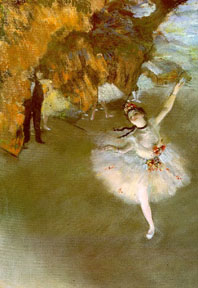
The Star,
1878
|
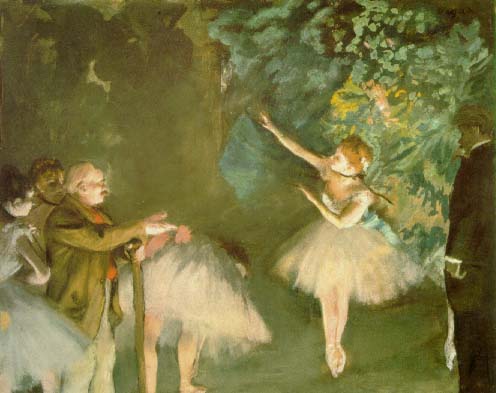
Ballet Rehearsal, 1875
|
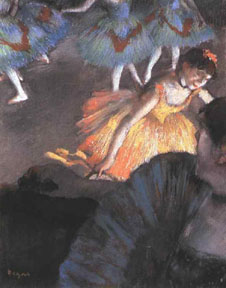
At the Ballet: Woman with
a Fan 1883-5
|
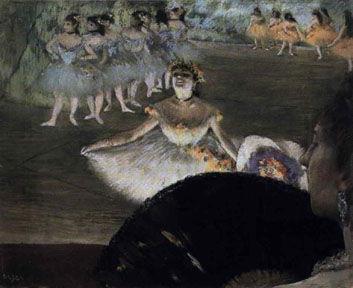
View From the Loge
|
Degas is know primarily for his
paintings and pastels of ballerinas. He created literally hundreds of images
of this subject, but the
artworks are just as much about movement, light and color as they are about
the ballet. Though he captures the elegance of the dance, the figures are
often in awkward poses, and are often cropped from the composition in unusual
ways. This is his most innovative contribution. Instead of looking posed,
he gives the scenes an element of spontaneity, a primary concern of all impressionists.
Like the other impressionists, he is interested in light and changing atmosphere
- but his is almost always the light of the stage or indoor lighting.
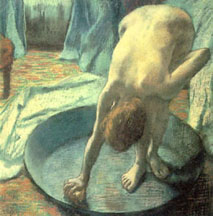
The Bath, 1885-6
|
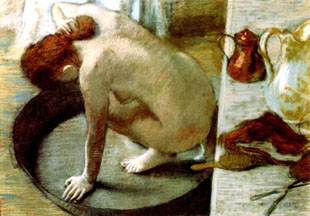
The Tub, 1886
|
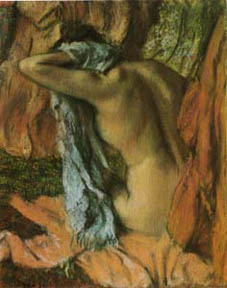
After the Bath, 1886
|
In addition to the ballet, Degas
frequently drew and painted images of women caught in the moment of grooming
or bathing themselves. Here, the viewer becomes aware of a very unusual vantage
point, and one almost feels like you are glimpsing the woman while she is
unaware of your gaze. Again, the model is a study of natural movement. Degas
does not seem to be interested in self-conscious portraiture, but in the daily
events of everyday life.
For Degas, everyday events also
included going to the carnival or the opera, favorite activities of the Parisian
middle-class. Here, again, we see his unusually cropped compositions and vantage
points. This cropping was probably influenced by the advent of photography,
which was just beginning to become popular.
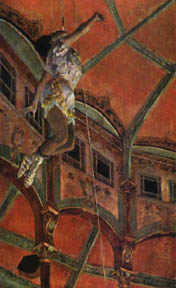
Miss Lala at the Circus
|
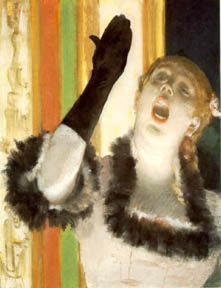
Singer with a Glove, 1878
|
Another activity which was popular
with the Parisan upper-middle class were the horse races. Naturally, Degas
was there to record his impression of the events. Again, he chooses unusual
moments (such as the jockey's fall) and oddly cropped compositions, bringing
our attention to the random moment.
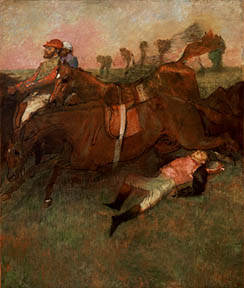
The Fallen Jockey
|
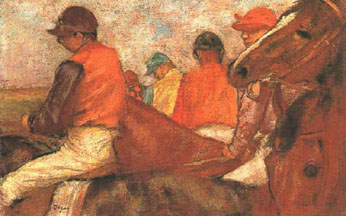
Jockeys In Front of the
Grandstands, 1882-85
|
Mary
Cassatt
(1844-1926)
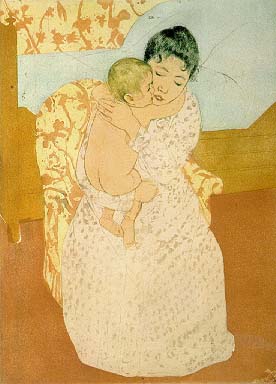
Maternal Caress, 1890-91
|
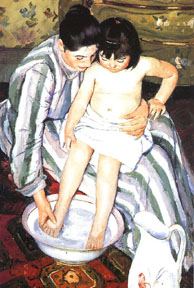
The Bath, 1891
|
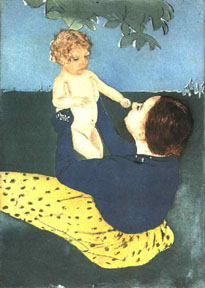
Horse Chesnut, 1895
|
Mary Cassatt was one of few women
artists involved in the Impressionist group. An American, she was a friend
of Edgar Degas, and was invited by him to exhibit with them in Paris. Her
compositions are somewhat similar to those of Degas, in the way that she crops
the space. The asymmetrical compositions are also strongly influenced by the
work of Japanese printmakers. Cassatt mastered the mediums of oil painting,
pastel, and printmaking (especially drypoint with aquatint). The subject which
most frequently captured her attention was that of the tenderness expressed
between mothers and children. Cassatt herself never married or had children.
She was of the belief that she had to make a choice either for motherhood
or her career. She chose art, but children and family life were obviously
a preoccupation.
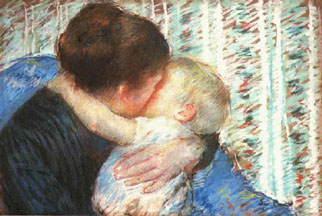
Mother and Child, 1880
|
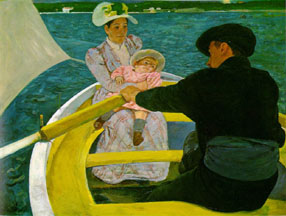
The Boating Party, 1893
|
Other Impressionists
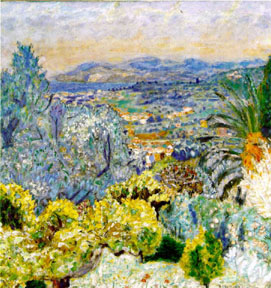
Pierre Bonnard, Cote d'Azur
|
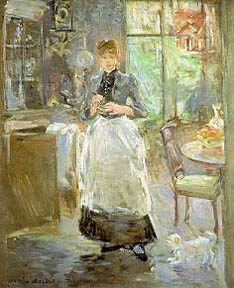
Berthe Morisot
|
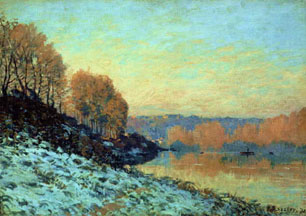
Alfred Sisley, The Seine
at Bougival
|

Camille Pisarro, Haymakers
at Rest
|
to Post-Impressionism
|